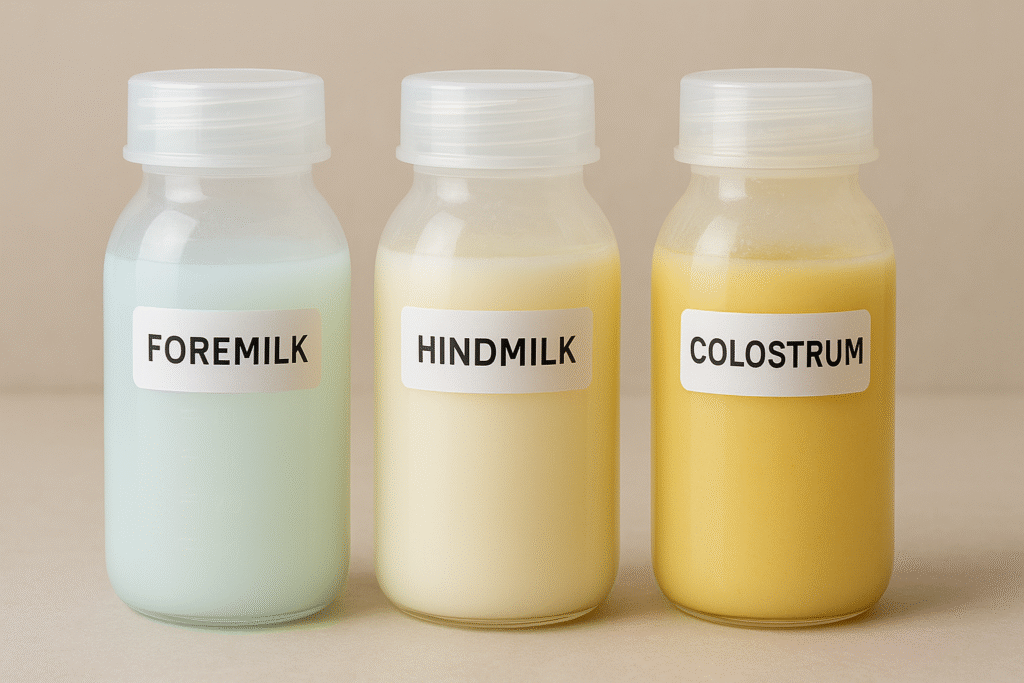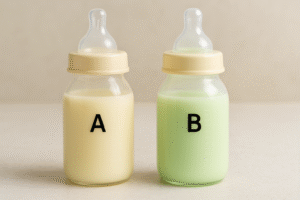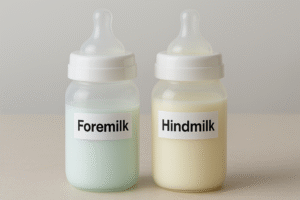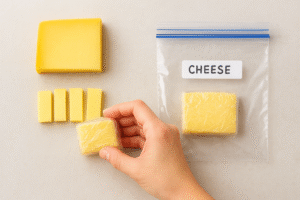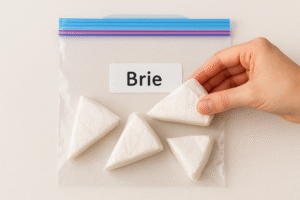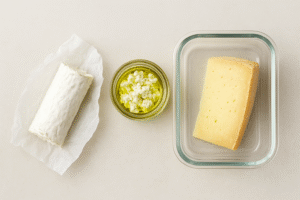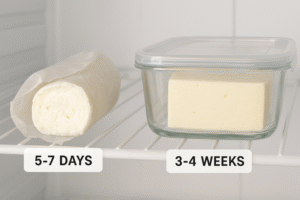Understanding What Different Colors of Breast Milk Mean and When to Worry.
Why Breast Milk Changes Color
Every U.S. mom notices at some point that her breast milk doesn’t always look the same — sometimes it’s white, yellow, bluish, or even green. Don’t panic!
The color of breast milk can change due to diet, hydration, fat content, storage conditions, or medications — and most of these changes are completely normal.
According to the CDC’s Breast Milk Storage and Handling Guidelines, color variation is harmless in most cases and simply reflects natural differences in nutrients and fat distribution.
Common Breast Milk Colors and What They Mean
1. Bluish or Pale Milk (Foremilk)
This is the first milk released during a pumping or nursing session. It’s thinner and higher in lactose but lower in fat — perfect for quenching your baby’s thirst.
🍼 Tip: It’s totally normal if pumped milk looks almost watery at first.
2. Creamy White or Yellow Milk (Hindmilk or Colostrum)
Yellow-tinted milk often appears when you’ve gone longer between feeds or during early postpartum days when colostrum is still present. This “liquid gold” is rich in antibodies and fat.
👉 You can also explore our related article: How Do You Store Colostrum (Liquid Gold Storage Guide for New Moms).
3. Green Milk

Often linked to eating leafy greens, spirulina, or food coloring (like green smoothies). It’s safe and nutritious.
4. Pink or Brown Milk
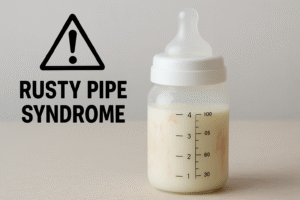
This can come from rusty pipe syndrome, a harmless postpartum condition caused by small amounts of blood mixing with milk. It usually clears within a few days.
However, if you notice persistent brown or red streaks, consult your lactation consultant.
5. Orange or Golden Milk
This typically happens when you eat foods high in beta-carotene — like carrots, sweet potatoes, or squash. Totally normal and full of nutrients!
6. Gray or Black Milk (Medication-Related)
Certain antibiotics or supplements (like Minocycline) can cause dark milk. Always discuss medication side effects with your OB-GYN before nursing.
How Freezing and Storage Affect Milk Color
Breast milk can change color slightly after being stored or frozen — sometimes taking on a bluish or yellow hue due to fat separation.
This is completely natural. Once thawed, gently swirl (don’t shake) to recombine the layers.
👉 Learn more in our guide How to Unthaw Breast Milk Quickly (Safe Speed-Thaw Guide for Busy Moms).
If the milk smells rancid or has a strong soapy odor, it may indicate high lipase activity — not harmful, but it can affect taste.
When Color Change Might Indicate a Problem
Most color variations are harmless, but you should consult your doctor if:
- The milk is consistently red, dark brown, or black without a clear reason.
- You notice foul smell, clumps, or curdling even when stored properly.
- The milk color changes suddenly after starting a new medication.
👉 For a detailed breakdown of safety indicators, check out How to Know If Breast Milk Is Bad (U.S. Moms’ Safety Guide 2025).
Expert Notes (Based on U.S. Safety Standards)
- The CDC and American Academy of Pediatrics (AAP) confirm that normal color shifts don’t impact breast milk’s nutritional value.
- Always use sterile containers and maintain consistent cold storage to prevent spoilage.
- Avoid mixing warm and cold milk together — see our post Can I Mix Warm and Cold Breast Milk? for full details.
FAQ: Breast Milk Colors Explained
Q1: What color should breast milk be normally?
Usually white, bluish, or slightly yellow — depending on fat and hydration levels.
Q2: Why does my milk look green?
It’s likely from green veggies or supplements — safe and common.
Q3: Can frozen milk change color?
Yes, slight yellowing or blue tones appear after freezing but are normal.
Q4: Should I worry if milk turns pink or brown?
Occasional color change is fine, but persistent discoloration should be checked by a healthcare provider.
Conclusion: Every Color Tells a Story
Breast milk color naturally reflects your diet, storage, and stage of lactation — not a sign of danger. Understanding these shades helps you feel confident, informed, and stress-free during your breastfeeding journey.
If you notice unusual patterns, trust your instincts and consult a professional.
For more U.S.-based safety insights, explore CDC’s Breast Milk Storage Guidelines and our own Breast Milk Storage: Complete U.S. Mom’s Guide (2025 Edition).

